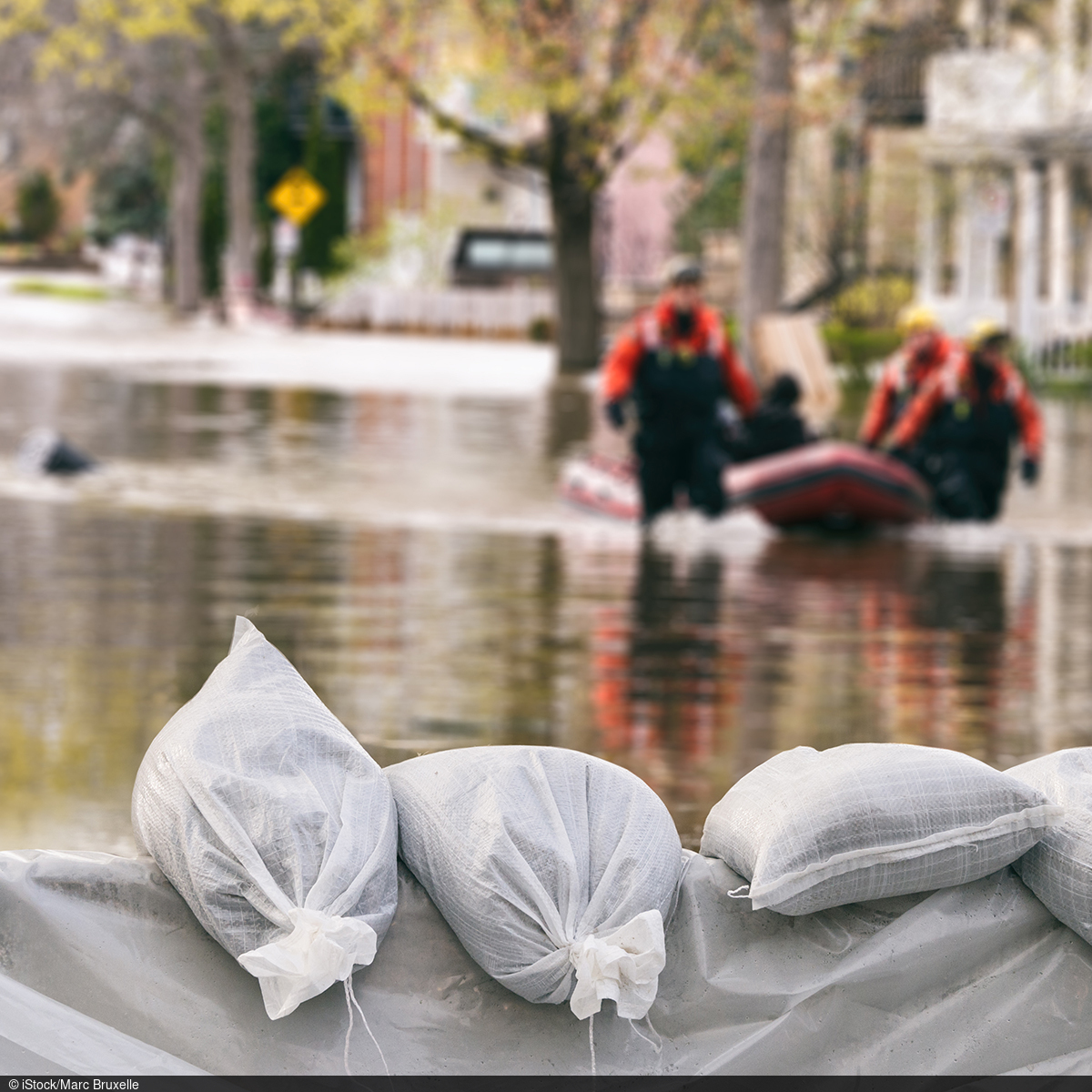Private Measures to Safeguard Against the Effects of Climate Change
ResearchEasier Said than Done
After the devastating extreme weather events of the past few years, many people are looking to take structural measures to protect themselves against the effects of climate change, be it flooding or extreme heat. However these plans often fail to go beyond good intentions. How big is the gap between intention and actually taking action? Are there differences between the people who follow through on their plans and those who are only paying lip service? And what is the connection between the implementation of precautionary measures and life satisfaction? A recent study from ZEW Mannheim finds out.
There are a range of measures that people can take in order to protect themselves against the effects of climate change – such as flooding or extreme heat. They can install a backwater valve in their basement for flood protection for example, or put a green roof on their house to lower room temperature in hot summers. Often, however, these remain as simply good intentions and the appropriate measures are never implemented. Researchers from ZEW Mannheim and the Free University of Amsterdam have further investigated this discrepancy between good intentions and actual behaviour, the so-called intention-behaviour gap. The analysis is based on data from the panel survey “Green SOEP.” The data looks at around 5,200 households in Germany who took part in at least two of the three survey waves in the years 2012, 2014 and 2020. Among other things the survey asked which of the following measures the household had implemented against flooding and extreme heat: Elevated storage of valuables, construction of backwater valves, water barriers at basement windows and doors, watertight interior coatings, watertight outer coatings and watertight floorings (flooding), as well as purchase of fans, air conditioning, heat protective film and installation of green roofs (heat).
Those who have already suffered damage are more likely to take precautions
The results of the ZEW study show a substantial discrepancy between stated intentions and implementation over the surveyed period. The Intention-Behaviour Gap is therefore large. “The surveyed households implemented on average 25 per cent of intended flood protection projects. For heat protection the percentage of actually implemented measures stood even lower at 13 per cent,” said Professor Martin Kesternich, deputy head of the ZEW Research Unit “Environmental and Climate Economics” and one of the authors of the study. Furthermore, the ZEW analysis suggests that having experienced damage – particularly from flooding – leads to action being taken sooner. “If a household was ever directly affected by flooding, they tend to follow up on their modification plans sooner than unaffected households. For these households the gap between intention and behaviour is smaller,” adds ZEW co-author Dr. Daniel Osberghaus. Other possible explanatory factors, however, such as the perceived self-efficacy, hardly explain the size of the intention-behaviour gap. The ZEW study shows therefore that analysis based merely on statements of intent from private households must be interpreted carefully. In particular, political conclusions should not be drawn solely from the data collected about intended plans.
That unpleasant feeling of having taken precautionary measures for nothing
As one of the possible factors that can influence the gap between intention and behaviour, the ZEW study examined the effect of anticipated regret. This feeling can arise when a household does in fact implement precautionary measures, but subsequently gets the feeling of having invested “for nothing” as extreme weather events don’t initially occur. In some cases this phenomenon can even reflect itself in lower perceived life satisfaction. Hence, many people tend to avoid such situations. “Anticipated regret is definitely reflected in our data for some households,” says Kesternich. “Surveyed individuals who successfully implemented their plans before they were affected by a natural disaster exhibit the highest life satisfaction in our data. Whereas the most unsatisfied people are those who did in fact take precaution against extreme weather events, but haven’t yet experienced any situation in which these measures have prevented damage.”

